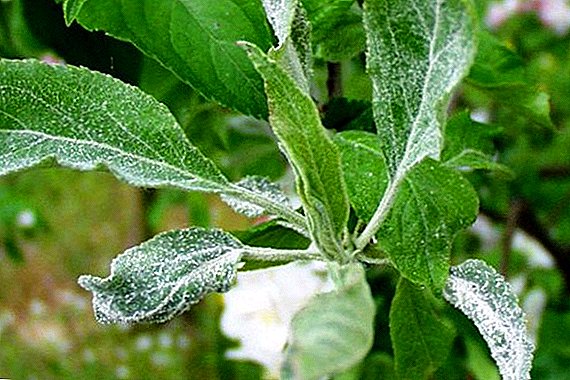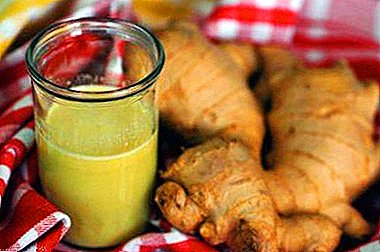 Pasteurellosis - a terrible disease that occurs suddenly and in a short time kills livestock. Infections are susceptible to all birds, but we will consider the disease of pasteurellosis in chickens, its symptoms and treatment. Given the nature of the disease, you need to be prepared for it.
Pasteurellosis - a terrible disease that occurs suddenly and in a short time kills livestock. Infections are susceptible to all birds, but we will consider the disease of pasteurellosis in chickens, its symptoms and treatment. Given the nature of the disease, you need to be prepared for it.
Description
Birds' cholera, also known as pasteurellosis, is a bacterial disease that attacks all varieties of wild and domestic poultry. Although pasteurellosis is well studied, it still manages to cause impressive damage to domestic poultry farming today.
It has been leading its history since 1782, when it was studied in France. On the territory of Russia, it occurs throughout the country, regardless of the region.  Most often outbreaks of cholera are noticed in the private sectors, or in the adjacent farms that are focused on the mass production of eggs.
Most often outbreaks of cholera are noticed in the private sectors, or in the adjacent farms that are focused on the mass production of eggs.
Diseased chickens stop eating, their diarrhea begins, and as a result they die en masse. A surviving bird remains a source of infection for life, so it is almost impossible to completely cure it.
You will probably be interested to read about the treatment of pasteurellosis in pigs, rabbits and cattle.
Causes and pathogen
The causative agent of cholera is a stick Pasterella multocida. Caught in temperature conditions of about 70 degrees, she dies after half an hour, and when boiling immediately. However, we consider options when she finds herself in the ideal environment for her - in a living organism.
The wand enters the body through infected air, feed, or water. The source may be the feces of an infected individual. First of all, the infection settles on the mucous membrane of the nose, larynx and pharynx, then it affects the whole organism of the bird.
Temperature fluctuations and increased humidity contribute to the development of infection. 
Did you know? For the first time microbiologist Louis Pasteur singled out the wand back in 1880 in France.
Symptoms and course of the disease
Pasteurellosis in birds appears quite vague symptoms, and the treatment is complex.
First of all, you will notice that Chickens significantly lose their appetite, and their general condition is slowly deteriorating. Gradually, livestock begins to die.
Broilers usually fall ill at the stage of 30-35 days. The disease is spread around 130 days. Egg pullet most often falls ill at the age of two to three months.  The incubation period is very short - from 12 hours to two or three days, depending on the activity of the pathogen. The disease can be chronic and acute.
The incubation period is very short - from 12 hours to two or three days, depending on the activity of the pathogen. The disease can be chronic and acute.
Acute form
In the acute form of the disease, the infection instantly covers all the livestock, and the bird dies at the speed of a forest fire. External signs do not have time to fully manifest, but you can see that chickens refuse to feed and are in a somewhat depressed, weak state.
Important! Even if the bird survives, it is the carrier of the disease for life.They develop green diarrhea with a possible admixture of mucus or even blood. The bird’s comb and earrings turn blue, it is breathing hard and drinking a lot.
After just a few days after the first symptoms, the chickens are already starting to die. The percent of a lethal outcome varies within 30-90% and above.  The eggs of the surviving hens are much smaller, but after a few months the situation is evened out.
The eggs of the surviving hens are much smaller, but after a few months the situation is evened out.
Learn more about the breeds of chickens like: Orpington, Minorca, Rhode Island, Sussex, Wyandot, Faverol, Leghorn, Cochinchin, Brahma.
Chronic
In the chronic nature of the disease, the symptoms are somewhat different than in the acute form of the disease. Chickens suffer from shortness of breath, wheezing while breathing, a runny nose is possible. There are also more obvious symptoms: swollen paws, crests, earrings or intermaxillary space.
Much less often the chickens turn red and their eyes become inflamed. In such a situation, the bird is very depleted, its productivity drops significantly, but it is sick for only a few months.
Such a course of the disease is possible with mild infection aggression or its insufficient amount in the body.
Diagnosis of the disease
At the first suspicions of the disease, sick individuals should be protected from healthy ones and slaughtered. Then disinfect the room. At the initial stage, the infection can be diagnosed by its symptoms, as well as by contacting a veterinarian.  In the case when some individuals have already died, they need to be given to the laboratory, where they will determine exactly what infection has been fatal.
In the case when some individuals have already died, they need to be given to the laboratory, where they will determine exactly what infection has been fatal.
An infection can be accurately diagnosed only under laboratory conditions. At the autopsy of the bird's corpse, hemorrhage can be found in the heart and other internal organs. Another argument in favor of this disease is a small, white-washed necrosis in the liver.
Important! Diagnosis is necessary to distinguish cholera from influenza, salmonellosis, and Newcastle disease.
Treatment
It should be noted first of all that the treatment of pasteurellosis in chickens is completely meaningless. Even if the chickens survive, they will carry fewer eggs, and they themselves will remain a source of infection until the end of their lives. The best solution is to kill the bird and dispose of their carcass.
For prophylactic treatment using antibacterial drugs that are given to the bird during the week. Levomitsetin give along with food with a dosage of 60 mg per 1 kg of live weight. "Akvaprim" give with water, mixing 1.5 ml per 1 liter.  Also, all medications will be suitable, the active components of which are spectinomycin or lincomycin. The main thing in the treatment is still prevention, to prevent infection.
Also, all medications will be suitable, the active components of which are spectinomycin or lincomycin. The main thing in the treatment is still prevention, to prevent infection.
In the treatment of pasteurellosis in animals using drugs such as: "Lozeval", "Nitoks" and "Tromeksin".
Prevention
The best prevention is the creation of excellent sanitary conditions. It is necessary to monitor the conditions of the birds and pay much attention to the feed. The main thing in prevention is to exclude the entry of the pathogen from the external environment.
In case of suspicion of the disease, all birds should be immunized. A timely procedure can save your chickens, so tightening is not recommended.












